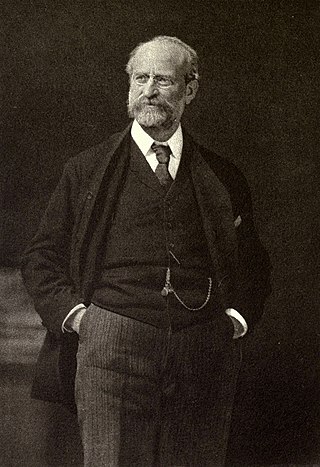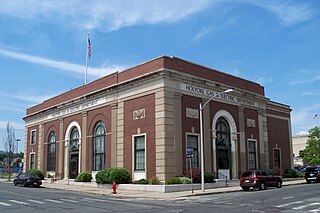
The University of Massachusetts Boston is a public research university in Boston, Massachusetts, United States. It is the only public research university in Boston and the third-largest campus in the five-campus University of Massachusetts system. UMass Boston is the third most diverse university in the United States.

Holyoke is a city in Hampden County, Massachusetts, United States, that lies between the western bank of the Connecticut River and the Mount Tom Range. As of the 2020 census, the city had a population of 38,247. Located 8 miles (13 km) north of Springfield, Holyoke is part of the Springfield Metropolitan Area, one of the two distinct metropolitan areas in Massachusetts.

South Hadley is a town in Hampshire County, Massachusetts, United States. The population was 18,150 at the 2020 census. It is part of the Springfield, Massachusetts Metropolitan Statistical Area.

The University of Massachusetts Amherst is a public land-grant research university in Amherst, Massachusetts. It is the flagship campus of the University of Massachusetts system, and was founded in 1863 as the Massachusetts Agricultural College. It is also a member of the Five College Consortium, along with four other colleges in the Pioneer Valley.

The University of Massachusetts is the five-campus public university system and the only public research system in the Commonwealth of Massachusetts. The university system includes five campuses, a satellite campus in Springfield and also 25 campuses throughout California and Washington with the University of Massachusetts Global.
Eversource Energy is a publicly traded, Fortune 500 energy company headquartered in Hartford, Connecticut, and Boston, Massachusetts, with several regulated subsidiaries offering retail electricity, natural gas service and water service to approximately 4 million customers in Connecticut, Massachusetts, and New Hampshire.
Warren McGuirk Alumni Stadium is a 17,000-seat multi-purpose stadium in Hadley, Massachusetts, on the campus of the University of Massachusetts Amherst.

The Holyoke Canal System is a system of power canals in Holyoke, Massachusetts. It is split into three canals based on elevation and distance from the inlet at the Holyoke Dam- the First Level Canal, Second Level Canal, and Third Level Canal. Constructed over a period between 1847 and 1892, the Canal System, along with the Dam, is recognized as a Historic Mechanical Engineering Landmark by the American Society of Mechanical Engineers for its use in the development of the Venturi meter by Clemens Herschel, the first means of measuring large-scale flows, and the McCormick-Holyoke Turbine by John B. McCormick, which doubled the efficiency of turbines to more than 80% in its time.

Hydro-Québec's electricity transmission system is an international electric power transmission system centred in Quebec, Canada. The system pioneered the use of very high voltage 735-kilovolt (kV) alternating current (AC) power lines that link the population centres of Montreal and Quebec City to distant hydroelectric power stations like the Daniel-Johnson Dam and the James Bay Project in northwestern Quebec and the Churchill Falls Generating Station in Labrador.

Jack M. Wilson is an American educator, entrepreneur and the President-Emeritus and Distinguished Professor of Higher Education, Emerging Technologies, and Innovation at the University of Massachusetts Lowell. During his career, he has served various institutions as professor of physics, department chair, research center director, dean, provost, vice president, and president, and has served with multiple professional societies and government committees.
The 1977 UMass Minutemen football team represented the University of Massachusetts Amherst as a member of the Yankee Conference during the 1977 NCAA Division II football season. Led by Dick MacPherson in his seventh and final season as head coach, the Minutemen compiled an overall record of 8–3 with a mark of 5–0 in conference play, winning the Yankee Conference title. UMass advanced to the NCAA Division II Football Championship playoffs, losing in the quarterfinals to the eventual national champion, Lehigh. The team played home games at Alumni Stadium in Hadley, Massachusetts.

Clemens Herschel was an American hydraulic engineer. His career extended from about 1860 to 1930, and he is best known for inventing the Venturi meter, which was the first large-scale, accurate device for measuring water flow. He developed this device while serving as director of the Holyoke Testing Flume, a turbine testing facility which he would redesign, which became the first modern hydraulics laboratory in the United States and the world.

The Holyoke Dam, also referred to as the Hadley Falls Dam, or Hadley Falls Station is a granite dam built in tandem with the Holyoke Canal System at Hadley Falls on the Connecticut River, between Holyoke and South Hadley, Massachusetts. The water differential created by the dam produced mechanical hydropower for industrial uses in Holyoke, and later hydroelectric power.

This is a bibliography of Holyoke, a city in Massachusetts, with books about the area's history, culture, geography, and people. Due to the area's proximity to a number of industrial developments and the numerous cultures of different waves of immigrant workers, a wide number of books, dissertations, and comprehensive articles have been written about Holyoke throughout its history in several languages. This list is not intended to be complete, authoritative, or exhaustive and does not include promotional material, travel guides, recipe books, directories, or the catalogs of industrial companies that have resided therein.

The Holyoke Street Railway (HSR) was an interurban streetcar and bus system operating in Holyoke, Massachusetts as well as surrounding communities with connections in Amherst, Belchertown, Chicopee, Easthampton, Granby, Northampton, Pelham, South Hadley, Sunderland, Westfield, and West Springfield. Throughout its history the railway system shaped the cultural institutions of Mount Tom, being operator of the mountain's famous summit houses, one of which hosted President McKinley, the Mount Tom Railroad, and the trolley park at the opposite end of this funicular line, Mountain Park.

Holyoke Gas & Electric (HG&E), formally known as the City of Holyoke Gas & Electric Department (HGED), is a municipal electric, gas, and telecommunications utility primarily serving Holyoke and Southampton, Massachusetts, one of two in Massachusetts which provide all three services. Founded in 1902 with the purchase of gas and electric plants from the Holyoke Water Power Company, the municipal corporation launched its first fiber optics communications services in 1997. On December 14, 2001 the City of Holyoke purchased the majority of the remaining assets and operations of the Holyoke Water Power Company from Northeast Utilities and as a result the municipal utility assumed control of the Holyoke Dam and Canal System and an electric distribution system serving industrial electric customers in the flats neighborhood. The utility discontinued district steam service to conserve energy used in aging infrastructure in September 2010. Using hydroelectric power generation in tandem with a series of solar panel facilities, the utility has among the lowest rates in the Commonwealth, and as of 2016 between 85% and 90% of the city's energy output was carbon neutral, with administrative goals in place to reach 100% in the next decade.

From the beginning of the city's history as the western bank of Springfield, Irish families have resided in and contributed to the development of the civics and culture of Holyoke, Massachusetts. Among the first appellations given to the city were the handles "Ireland", "Ireland Parish", or "Ireland Depot", after the village was designated the 3rd Parish of West Springfield in 1786. Initially occupied by a mixture of Yankee English and Irish Protestant families, many of whom belonged to the Baptist community of Elmwood, from 1840 through 1870 the area saw a large influx of Irish Catholic workers, immigrants to the United States, initially from the exodus of the Great Famine. During that period Irish immigrants and their descendants comprised the largest demographic in Holyoke and built much of the early city's infrastructure, including the dams, canals, and factories. Facing early hardships from Anti-Irish sentiment, Holyoke's Irish would largely build the early labor movement of the city's textile and paper mills, and remained active in the national Irish nationalist and Gaelic revival movements of the United States, with the Holyoke Philo-Celtic Society being one of 13 signatory organizations creating the Gaelic League of America, an early 20th century American counterpart of Conradh na Gaeilge.

The Holyoke Testing Flume was a hydraulic testing laboratory and apparatus in Holyoke, Massachusetts, operated by the Holyoke Water Power Company from 1870 to 1932, and used to test the performance of water turbine designs, completing 3,176 tests of efficiency in that time. It was described by Robert E. Horton in court testimony as the only facility of its kind in the 19th and early 20th century, which made possible the standardization of American water turbines. Indeed Clemens Herschel, who managed and redesigned the facility in the 1880s, later described it in Congressional testimony as the "first modern hydraulic laboratory" in the United States and the world. It was through Herschel's need to determine the water power consumption of different mills, and in this testing system that he would invent the Venturi meter, the first accurate means of measuring large-scale flows, which still retains widespread use in modern technology today.




















